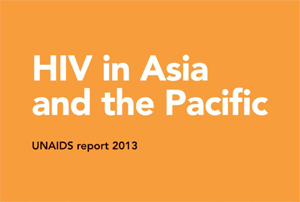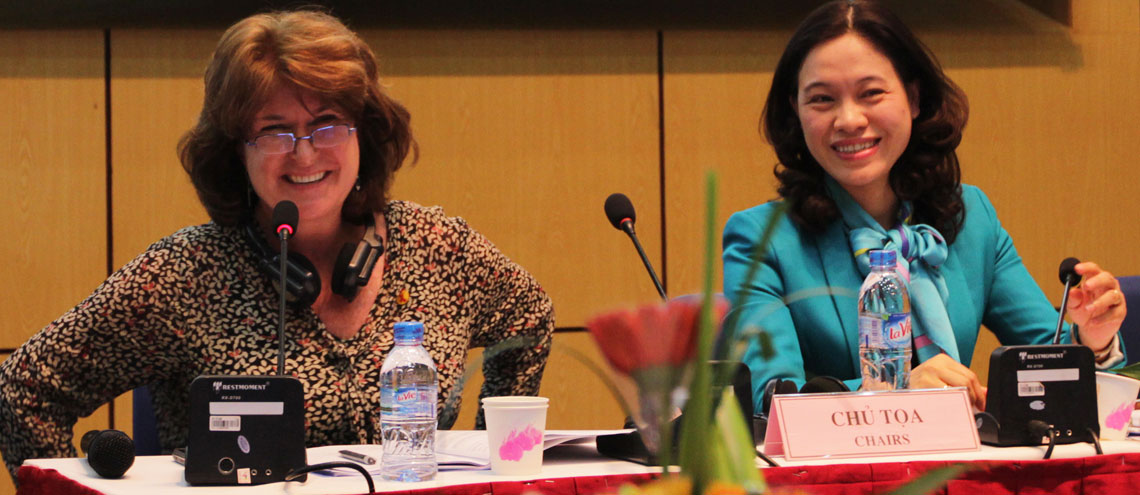UNAIDS launched new report on Asia and the Pacific’s AIDS response
 Significant progress has been seen across the region but there is need for greater focus on key geographical areas and key populations at higher risk and smarter investment for greater impact, according to a new report from the Joint United Nations Programme on HIV/AIDS (UNAIDS).
Significant progress has been seen across the region but there is need for greater focus on key geographical areas and key populations at higher risk and smarter investment for greater impact, according to a new report from the Joint United Nations Programme on HIV/AIDS (UNAIDS).
Launched at the 2013 International Congress on AIDS in Asia and the Pacific (ICAAP11), the report, titled HIV in Asia and the Pacific: Getting to Zero, found that more people than ever before have access to HIV services across the region. However, inadequate focus on key populations at higher risk of HIV infection and geographical areas with higher HIV burden mean that most countries in the region are not progressing fast enough to reach global targets on HIV prevention, treatment, care and support.
“The pace of progress needs to be redoubled to sustain past achievements, drive results and meet global AIDS targets,” said UNAIDS Director of the Regional Support Team for Asia and the Pacific, Steven Kraus. “Efforts should be more focused on smart investments in the right places and on programmes to reach the people in greatest need. Communities of people living with HIV and key populations at higher risk must continue to be central to the region’s AIDS response—as agents of change,” he said.
Emerging trends
According to the report, an estimated 4.9 million [3.7–6.3 million] people were living with HIV in Asia and the Pacific in 2012. Twelve countries account for more than 90% of people living with HIV and of new HIV infections in the region (Cambodia, China, India, Indonesia, Malaysia, Myanmar, Nepal, Pakistan, Papua New Guinea, the Philippines, Thailand and Viet Nam).
Regionally, numbers of new HIV infections have fallen by 26% since 2001. A number of countries have reduced new HIV infections by over 50% in that time: India (57%—among adults), Myanmar (72%), Nepal (87%), Papua New Guinea (79%) and Thailand (63%).
But emerging epidemics are becoming evident: between 2001 and 2012, new HIV infections increased 2.6 times in Indonesia; Pakistan has seen an eight-fold increase and new infections in the Philippines have more than doubled.
There are high HIV prevalence levels in some geographical areas within countries and among key populations, even in countries where national HIV prevalence rates are falling.
The number of people accessing antiretroviral treatment in the region has increased to 1.25 million people at the end of 2012. Numbers of AIDS-related deaths have declined by 18% since 2005 to 270000 in 2012, largely thanks to this increased access to treatment.
However, in 2012, nearly half of people in Asia and the Pacific who were eligible for treatment were not accessing it and rate of increased access is slowing down (up 13% in 2011-2012 compared to 20% in 2010-2011).
New infections among children have declined by 28% since 2001. However, regional coverage of HIV services to prevent new HIV infections in children remains low at 19%.
Key populations at higher risk of HIV infection
According to the report, new HIV infections in the region remain concentrated among key populations: people who buy and sell sex, people who inject drugs, men who have sex with men, and transgender people. The fastest-growing epidemics in the region are among men who have sex with men. These epidemics are typically concentrated in major cities: HIV prevalence among men who have sex with men is over 10% in at least 10 Asian metropolitan areas.
Most programmes to protect key populations and their intimate partners from HIV infection are inadequate in size and scale. Only an estimated 8% of overall AIDS spending in the region is for HIV prevention among key populations at higher risk
A number of countries in the region have made strides to address stigma and discrimination towards people living with HIV, with legal reform and developments including the revision and removal of some laws and policies affecting people living with HIV and key affected populations in ten countries since 2010. Yet almost every country still has some punitive laws and policies that prevent people living with HIV and key populations from accessing life-saving HIV services. Some 33 countries, territories and areas in the region are known to criminalize soliciting; 18 criminalize same sex behavior; 11 incarcerate people who inject drugs in compulsory drug detention centres; and 11 still have some type of HIV-related restriction on entry, stay and residence in place.
Smarter investments to maximize returns
The region has seen important developments in domestic financing for AIDS. Domestic public spending in Asia and the Pacific is approximately US$1.3 billion—59% of total regional AIDS spending in 2012. Among the countries most affected by HIV in the region, Malaysia funds 97% of its AIDS response, China funds 88% and Thailand 85%.
Total estimated HIV spending in the region (domestic and international resources) in 2012 was US$2.2 billion, up 5% from 2011. Despite these gains, the AIDS response in Asia and the Pacific remains underfunded. To achieve the 2015 annual investment target in low- and middle-income countries in Asia and the Pacific, UNAIDS estimates that approximately US$5.4 billion must be mobilized—US$3.2 billion more than was spent last year. As well as need for increased investment, more efforts are needed to ensure funding is directed to where it will have the greatest impact.
Download the HIV in Asia and the Pacific UNAIDS report 2013 here



